Observing wildlife is a captivating experience that offers a glimpse into the natural world. The USA is home to some of the best wildlife watching destinations, each with unique opportunities to see fascinating creatures. From the bison in Yellowstone National Park to the dolphins in the Florida Keys, these locations provide incredible views and encounters.
Other notable spots include the rugged landscapes of Katmai National Park, the serene wetlands of Everglades National Park, and the diverse ecosystems of Glacier National Park.
Whether you are an avid birdwatcher, a big-game enthusiast, or simply enjoy the great outdoors, these top ten wildlife watching destinations in the USA will leave you amazed and inspired. Each site offers a unique chance to observe and appreciate the beauty of wildlife in its natural habitat.
1. Yellowstone National Park, Wyoming
- Number of species: 400+
- Best time to visit: Fall
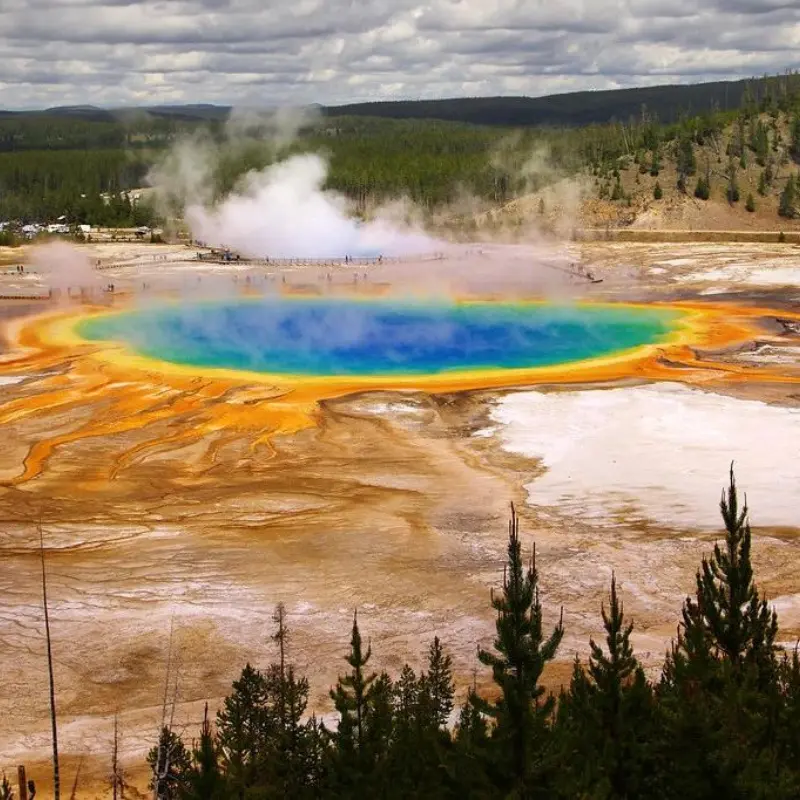
Yellowstone National Park offers a diverse terrain and a serene ambiance that captivates every visitor. Spanning over 2.2 million acres, the park features a mix of lush forests, sprawling meadows, and geothermal wonders. The famous Lamar Valley, often referred to as ‘America’s Serengeti,’ is a must-see for its stunning landscapes and rich biodiversity. Geysers, hot springs, and rivers create a dynamic environment that changes with the seasons, providing a picturesque backdrop for wildlife viewing and outdoor adventures.
Yellowstone boasts the largest concentration of animals in the lower 48 states, making it a paradise for wildlife enthusiasts. During the warmer months, you’ll encounter a diverse array of creatures, from burly bears and cougars to pocket gophers and miniature-sized martens. Fall is often the best time to visit, as many animals are more active and visible. From November to March, the crowds thin out, and the elusive wolf hunts closer to the shore, offering a unique opportunity to witness these magnificent predators in their natural habitat.
General Tips and Guidelines
- Maintain Safe Distance: Keep a safe distance from all animals.
- Use Binoculars: Use binoculars or zoom lenses for close-up views.
- Do Not Feed Wildlife: Never feed the wild animals that you may stumble on your way.
- Stay on Trails: Stay on designated trails to protect the park’s delicate ecosystems.
- Prepare for Weather: Be prepared for rapidly changing weather conditions by dressing in layers.
- Stay Hydrated: Carry plenty of water and snacks.
- Check Alerts: Always check park alerts and regulations before your visit.
- Respect Nature: Respect the natural environment to help preserve this incredible destination for future generations.
2. Monterey Bay, California

- Number of species: 200+
- Best time to visit: Year-round
Monterey Bay provides a picturesque coastal setting, perfect for wildlife watching. The bay’s clear blue waters are surrounded by scenic cliffs, sandy beaches, and lush kelp forests. The mild climate and stunning ocean views create a tranquil atmosphere for visitors. Whether you’re exploring tide pools along the shore or taking a boat tour, Monterey Bay offers breathtaking scenery and a peaceful escape into nature.
This area is a haven for marine life, hosting a variety of wildlife both wild and not-so-wild. Monterey Bay is home to migrating grey and humpback whales, which can often be seen breaching the water’s surface. Adorable sea otters float playfully on the waves, while seals and sea lions lounge on rocky outcrops. The bay is also a paradise for bird watchers, with countless seabirds soaring above or nesting along the coastline. You can get an up-close look at many of these animals through guided tours and educational programs.
General Tips and Guidelines
- Best Wildlife Viewing: Take advantage of guided tours for safe and informative wildlife encounters.
- Respect Wildlife: Maintain a respectful distance from animals and avoid disturbing their natural behaviors.
- Stay Safe: Always wear a life jacket during boat tours and follow safety instructions from guides.
- Protect the Environment: Avoid leaving any trash behind and participate in beach clean-up efforts when possible.
- Check Conditions: Be aware of weather conditions and tide schedules to ensure a safe and enjoyable visit.
- Binoculars and Cameras: Bring binoculars and cameras with zoom lenses to observe wildlife without getting too close.
- Educational Resources: Visit the Monterey Bay Aquarium to learn more about the local marine life and conservation efforts.
3. Rocky Mountain National Park, Colorado

- Number of species: 300+
- Best time to visit: Summer and Fall
Rocky Mountain National Park, a Colorado colossus, is a majestic landscape featuring 72 mountain peaks higher than 12,000 feet, spread across 265,800 acres. The park’s terrain includes dense forests, alpine tundra, and scenic river valleys, offering breathtaking views and a serene environment. With hundreds of miles of trails and countless peaks to summit, visitors can immerse themselves in the natural beauty of this iconic park. Whether you’re hiking, camping, rock climbing, or cycling, the park’s varied landscapes provide endless opportunities for adventure and exploration.
The park is home to a diverse array of wildlife, including native American animals such as herds of elk, mule deer, and bighorn sheep. You might even spot a lone mountain lion in the more remote areas. Bison, coyotes, and black-footed ferrets also inhabit the park, along with two kinds of deer, snapping turtles, frogs, and an abundance of bird species. Each season offers unique wildlife viewing experiences, with summer and fall being particularly rewarding due to the increased activity of many animals.
General Tips and Guidelines
- Wildlife Viewing: Use binoculars for safe and respectful observation of animals.
- Safety First: Keep a safe distance from all wildlife, especially large animals like elk and bison.
- Trail Etiquette: Stay on marked trails to protect the park’s ecosystem and ensure your safety.
- Camping Rules: Follow all camping regulations and guidelines, and store food properly to avoid attracting wildlife.
- Prepare for Weather: Dress in layers and be prepared for sudden weather changes, especially at higher elevations.
- Leave No Trace: Pack out all trash and leave nature as you found it to preserve the park’s beauty.
- Visitor Centers: Utilize visitor centers for maps, updates on trail conditions, and educational resources about the park and its wildlife.
4. Glacier National Park, Montana
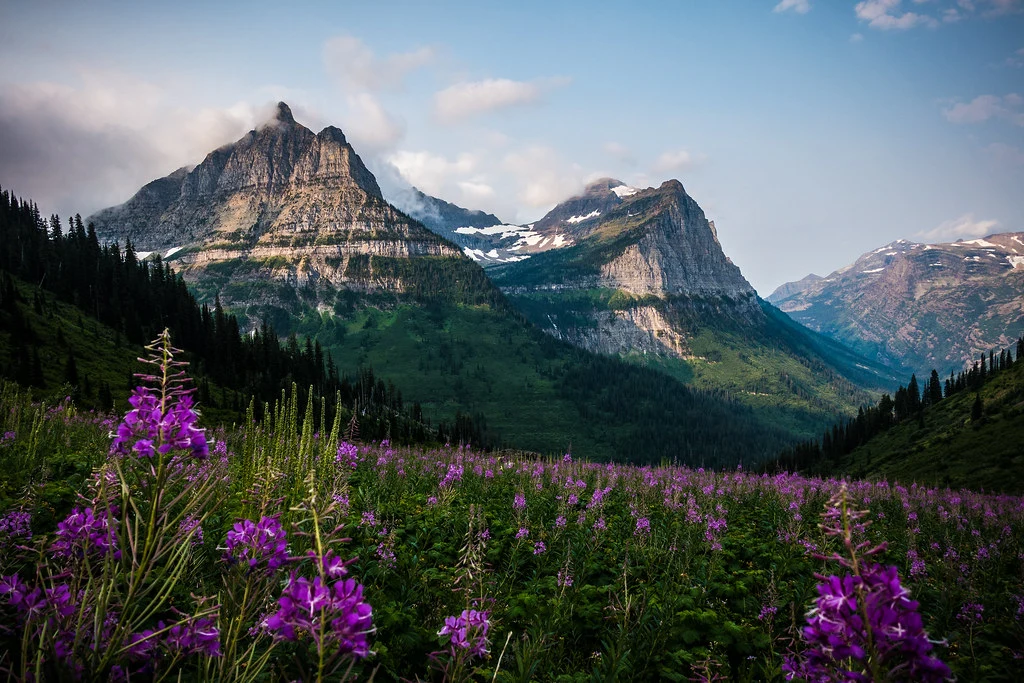
- Number of species: 250+
- Best time to visit: Summer and Early Fall
Glacier National Park is a breathtaking landscape featuring towering, snow-capped peaks, lush valleys, refreshing lakes, and dense forests. Spanning over a million acres, the park is a remote haven for a variety of wildlife. With over 700 miles of trails, visitors can explore the diverse terrain and encounter an array of flora and fauna. The park’s stunning vistas and pristine natural beauty make it a perfect destination for nature enthusiasts and adventure seekers alike.
The park is home to an impressive range of wildlife, including 270 species of birds and 70 species of mammals. You might spot moose, with their impressive antlers stretching up to 1.8 meters (6 ft.) and standing nearly 2.1 meters (7 ft.) tall. Bighorn sheep, white-tailed deer, and mountain goats are common sights. The park also offers the chance to see rarer species such as mountain lions, lynx, grey wolves, and wolverines. Glacier National Park boasts the largest population of grizzly bears in North America, making it a prime location for those hoping to glimpse these majestic creatures.
General Tips and Guidelines
- Wildlife Safety: Always keep a safe distance from all animals, particularly large mammals like moose and grizzly bears.
- Stay on Trails: Stick to marked trails to protect the environment and ensure your safety.
- Bear Awareness: Carry bear spray and know how to use it. Make noise while hiking to avoid surprising bears.
- Camping Rules: Follow all camping regulations, store food properly, and use bear-proof containers.
- Weather Preparedness: Dress in layers and be ready for sudden weather changes, especially in alpine areas.
- Leave No Trace: Pack out all trash and leave the park as you found it to preserve its natural beauty.
- Visitor Information: Visit park centers for maps, trail conditions, and educational resources about the park’s wildlife and history.
5. Kenai Fjords National Park, Alaska
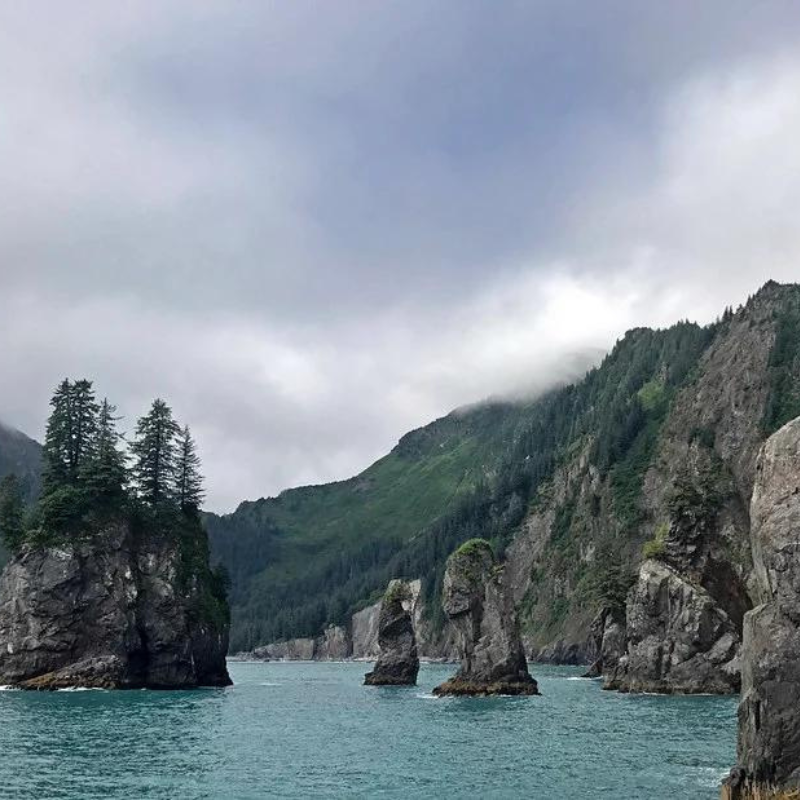
- Number of species: 200+
- Best time to visit: Summer
Kenai Fjords National Park offers a spectacular combination of rugged landscapes and abundant wildlife. The park, located near the small town of Seward, is known for its stunning scenery, including dramatic fjords, towering glaciers, and pristine coastal waters. Whether you’re exploring Seward or kayaking in Resurrection Bay, the park provides endless opportunities for breathtaking views and wildlife encounters.
The park is a haven for wildlife enthusiasts. Birds such as puffins and bald eagles soar through the air, occasionally crossing paths with mountain goats scaling the cliff sides. Playful porpoises dive in and out of the water, while Steller sea lions sunbathe on rocks and harbor seals cool down on floating ice floes. Orcas and gray whales also make appearances, offering unforgettable sightings for visitors. One of the best ways to experience the park’s diverse wildlife is via a small boat cruise, which allows for close-up views of these magnificent creatures.
General Tips and Guidelines
- Wildlife Viewing: Use binoculars for safe and respectful observation of animals.
- Safety First: Maintain a safe distance from all wildlife, particularly marine animals.
- Boat Tours: Choose small boat cruises for the best wildlife viewing opportunities.
- Stay Warm: Dress in layers and bring waterproof clothing to prepare for the park’s variable weather.
- Respect Nature: Avoid disturbing wildlife and follow all park regulations to protect the natural environment.
- Plan Ahead: Check weather conditions and tour schedules in advance to ensure a smooth visit.
- Local Resources: Utilize visitor centers in Seward for maps, updates on wildlife sightings, and information on guided tours.
6. Everglades National Park, Florida
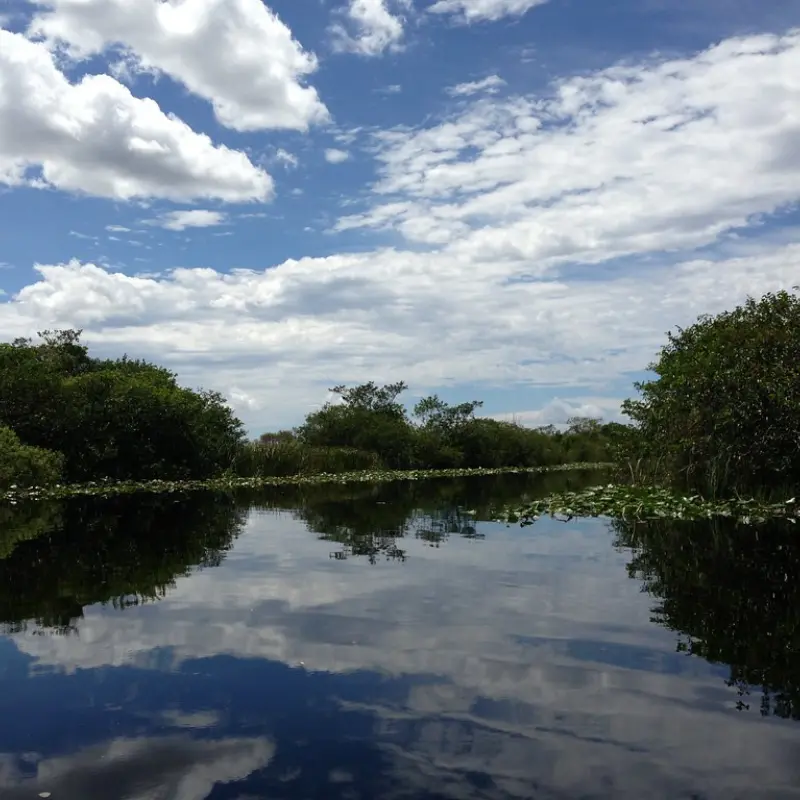
- Number of species: 400+
- Best time to visit: Late Winter to Early Spring
Everglades National Park is a vast, subtropical wilderness that spans over 1.5 million acres of southern Florida. Its unique landscape is characterized by lush mangroves, grassy marshes, and slow-moving waters. The park’s diverse ecosystems create a tranquil and captivating environment, perfect for wildlife watching and nature exploration. Visitors can explore the park by boat, kayak, or on foot, immersing themselves in the natural beauty of this remarkable area.
The Everglades is home to an incredible variety of wildlife. You’ll see white-tailed deer, turtles, and wading birds such as the stoic wood stork and the colorful roseate spoonbill. However, the main star of the show is the American alligator, with over 200,000 of them inhabiting the park’s waters. Between late winter and early spring, rising temperatures and low water levels encourage wildlife to congregate on the shores, making them easy to spot. The park also serves as the last refuge for the West Indian manatee and the Florida panther, alongside 33 other protected species.
General Tips and Guidelines
- Wildlife Viewing: Use binoculars for safe and respectful observation of animals.
- Safety First: Maintain a safe distance from all wildlife, especially alligators.
- Best Viewing Times: Visit between late winter and early spring for optimal wildlife sightings.
- Stay Hydrated: Carry plenty of water and wear sunscreen to protect against the sun.
- Protect the Environment: Avoid disturbing wildlife and follow all park regulations.
- Plan Your Visit: Check weather conditions and park alerts before your trip.
- Educational Resources: Visit park visitor centers for maps, wildlife information, and guided tour options.
7. Cuyahoga Valley National Park, Ohio

- Number of species: 300+
- Best time to visit: Spring and Fall
Cuyahoga Valley National Park, located just 20 miles southwest of Cleveland, Ohio, offers a serene escape into nature. The park spans over 33,000 acres and features a variety of landscapes, including rolling hills, dense forests, and scenic river valleys. Visitors can explore the park’s beauty through numerous trails, picturesque waterfalls, and historic sites. The tranquil ambiance and diverse habitats make it a perfect destination for wildlife watching and outdoor activities.
The park is home to a rich variety of wildlife, with over 300 species. From the boardwalk at Beaver Marsh, you can watch for water-loving mammals such as river otters, muskrats, and beavers, as well as snapping turtles that can weigh up to 55 pounds each. More than 200 bird species live or migrate through the park, including nesting peregrine falcons near the Route 82 bridge and majestic bald eagles. These diverse species make Cuyahoga Valley a bird watcher’s paradise.
General Tips and Guidelines
- Wildlife Viewing: Use binoculars for safe and respectful observation of animals.
- Best Spots: Visit Beaver Marsh for sightings of water mammals and snapping turtles.
- Bird Watching: Look for peregrine falcons near the Route 82 bridge and bald eagles throughout the park.
- Stay on Trails: Stick to marked trails to protect the environment and ensure your safety.
- Prepare for Weather: Dress in layers and be prepared for changing weather conditions.
- Leave No Trace: Pack out all trash and leave nature as you found it to preserve the park’s beauty.
- Visitor Information: Utilize visitor centers for maps, wildlife information, and updates on park conditions.
8. Mammoth Cave National Park, Kentucky

- Number of species: 200+
- Best time to visit: Spring and Fall
Mammoth Cave National Park in Kentucky is renowned for having the longest known underground cave system in the world. Spanning over 426 miles of explored caverns, the park offers a unique and mysterious landscape to explore. Above ground, the park features rolling hills, lush forests, and the winding Green River, creating a serene environment for hiking, camping, and wildlife watching. The subterranean wonders and surface beauty make Mammoth Cave a truly remarkable destination.
The caverns of Mammoth Cave are home to an incredible array of 160 species adapted to the dark, underground environment. Long-legged cave crickets can be seen picking their way up the walls, while eerily eyeless white cave fish swim through the underground waterways. Black-spotted orange cave salamanders lurk under rocks, adding to the park’s unique biodiversity. The combination of these unusual creatures and the park’s expansive cave system provides a fascinating experience for visitors.
General Tips and Guidelines
- Cave Tours: Book guided tours in advance to explore the cave safely and learn about its history and ecology.
- Wildlife Respect: Observe cave-dwelling creatures without touching or disturbing them.
- Stay on Trails: Follow marked paths and ranger instructions to protect delicate cave environments.
- Dress Appropriately: Wear sturdy shoes and bring layers, as cave temperatures can be cool even in summer.
- Carry Essentials: Bring water, snacks, and a flashlight for above-ground hikes and explorations.
- Leave No Trace: Pack out all trash and leave the natural surroundings undisturbed.
- Visitor Resources: Visit the park’s visitor center for maps, tour information, and educational exhibits on the cave system and its inhabitants.
9. Katmai National Park, Alaska

- Number of species: 40+
- Best time to visit: June to October
Katmai National Park in Alaska is a remote and pristine wilderness known for its breathtaking landscapes and unique wildlife. Spanning over 4 million acres, the park features rugged terrain, towering volcanoes, and lush river valleys. Accessing the park requires a plane ride, adding an element of adventure to the journey. This isolation ensures that visitors experience untouched nature and unparalleled tranquility, making Katmai a true wilderness gem.
The park is renowned for its brown bears, especially from June to October, when grizzlies congregate at the rivers to feast on returning salmon. These bears eat their weight (and sometimes more) in salmon to prepare for the winter months. Katmai is also famous for its bear cams, which stream live video of the grizzlies as they fish, offering a fascinating glimpse into their behavior. In addition to the bears, the park is home to a variety of other species, adding to its rich biodiversity.
General Tips and Guidelines
- Bear Safety: Always maintain a safe distance from bears and follow park guidelines to ensure your safety and theirs.
- Plan Ahead: Book flights and accommodations in advance, as there are no roads into or out of the park.
- Respect Wildlife: Observe animals without disturbing their natural behaviors.
- Pack Essentials: Bring appropriate gear, including sturdy footwear, layers, and bear spray.
- Stay Informed: Utilize park visitor centers for maps, updates on bear activity, and safety information.
- Follow Leave No Trace Principles: Pack out all trash and leave the park as you found it to preserve its pristine environment.
- Enjoy the Bear Cams: Take advantage of the park’s popular bear cams to watch grizzlies fishing from a safe distance.
10. Congaree National Park, South Carolina
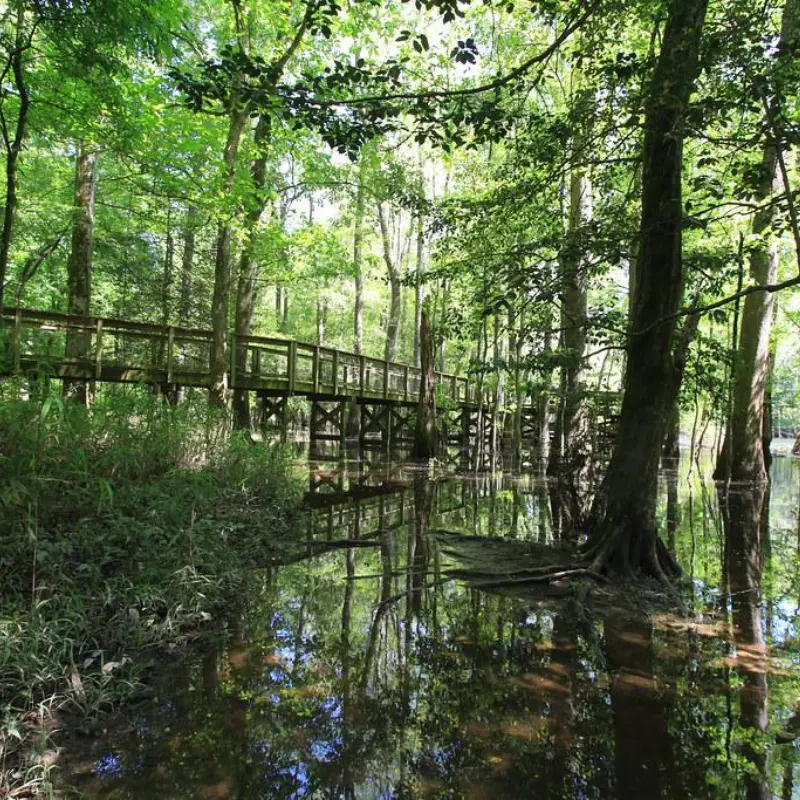
- Number of species: 300+
- Best time to visit: Spring and Fall
Congaree National Park in South Carolina is a natural wonder known for its towering old-growth hardwood forests and diverse ecosystems. The park encompasses over 26,000 acres of lush floodplains, making it an excellent destination for nature lovers and outdoor enthusiasts. The tranquil waters of the Cedar Creek Canoe Trail provide a peaceful way to explore the park’s beauty, offering stunning views of ancient trees and serene waterways.
Paddling the Cedar Creek Canoe Trail is one of the best ways to observe the park’s rich wildlife. Among the most commonly seen creatures are the so-called creepy-crawlies, including fishing spiders with leg spans wider than your palm and red-bellied water snakes. The park is also home to barred owls, river otters, pileated woodpeckers, and occasionally alligators. The diversity of species makes every visit to Congaree an exciting and unpredictable experience.
General Tips and Guidelines
- Wildlife Viewing: Use binoculars for safe and respectful observation of animals.
- Safety First: Maintain a safe distance from all wildlife, particularly snakes and alligators.
- Best Viewing Method: Paddle the Cedar Creek Canoe Trail for a unique perspective and excellent wildlife viewing opportunities.
- Prepare for Bugs: Bring insect repellent, especially in warmer months when bugs are most active.
- Stay on Trails: Stick to marked trails and waterways to protect the environment and ensure your safety.
- Pack Essentials: Bring plenty of water, snacks, and wear appropriate clothing for paddling or hiking.
- Visitor Information: Visit the park’s visitor center for maps, canoe rental information, and updates on trail conditions and wildlife sightings.
End Note
As you plan your next adventure, consider these top wildlife watching destinations across the USA. Each location offers unique opportunities to witness the beauty and wonder of nature up close. Whether you’re observing grizzly bears in Katmai or exploring the diverse ecosystems of Yellowstone, these destinations promise unforgettable experiences.
Embrace the thrill of wildlife watching and create memories that will last a lifetime. By visiting these incredible wildlife watching destinations, you’ll gain a deeper appreciation for the natural world and the importance of preserving it for future generations. Happy wildlife watching!

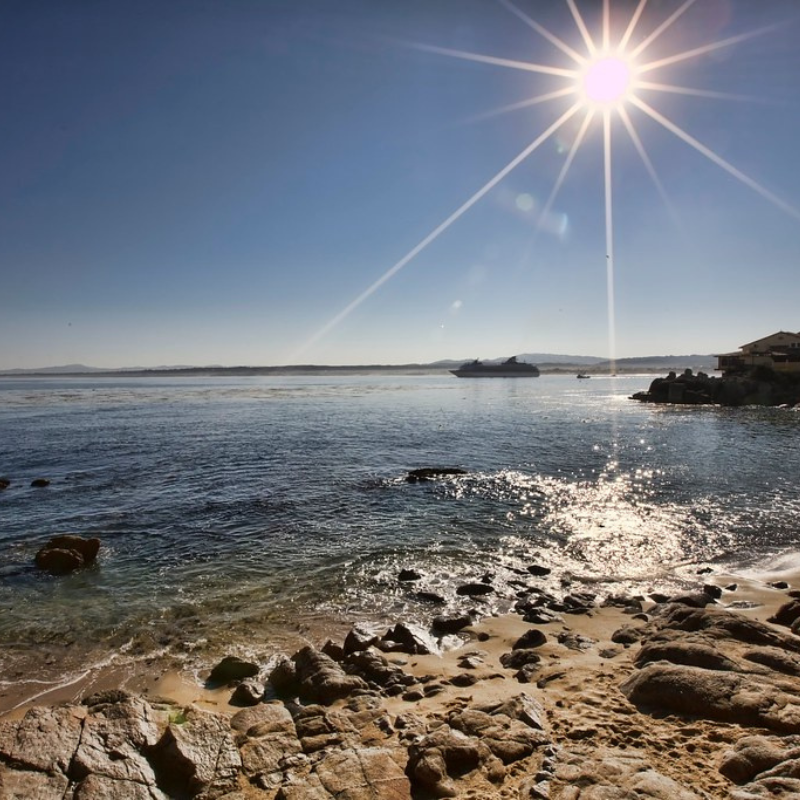

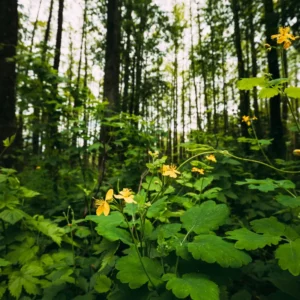

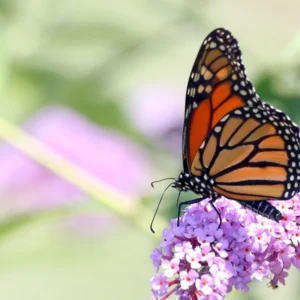


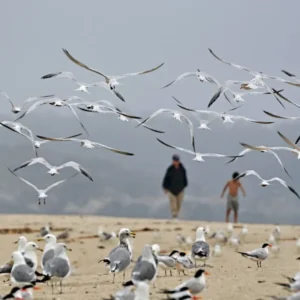
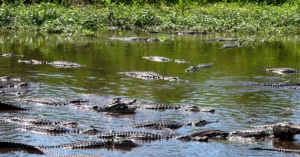
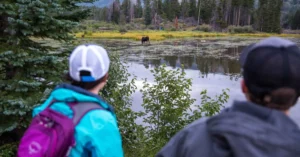
3 thoughts on “10 Must-Visit Wildlife Watching Destinations Across America”
Really enjoyed reading about Glacier National Park, Montana. I’ve been planning a trip there and it’s great to see it featured. The park’s scenery is supposed to be out of this world. Thanks for the spotlight, Julia!
Have you visited before? I’m looking for tips for first-timers!
First time for me too! Hoping to make the most of it. From what I’ve read, early summer’s the best time to go.